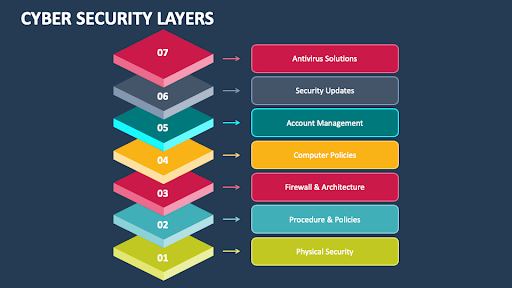Cyber security is a rapidly growing field that is essential in today's digital age. It refers to the techniques and measures used to protect computer systems, networks, and data from cyber attacks, theft, and damage. Cyber security is a multi-layered approach, meaning that it involves different layers or levels of protection to ensure the safety and integrity of digital information. In this article, we will discuss the various layers or levels of cyber security and their significance in safeguarding our digital world.
1. Physical Security:
The first layer of cyber security is physical security. It involves the physical protection of hardware, software, and other data storage devices. Physical security includes measures like restricting access to data centers and other areas where sensitive information is stored, installing surveillance cameras, and using biometric access controls. This layer ensures that only authorized personnel have access to critical systems and reduces the risk of physical theft or damage to hardware.
2. Network Security:
The second layer of cyber security is network security, which involves protecting computer networks from unauthorized access, misuse, and other malicious activities. This layer of security uses firewalls, intrusion detection systems, and other network-level devices to monitor and secure network traffic. Network security also involves implementing secure network protocols and enforcing strict access controls to prevent unauthorized access.
3. Application Security:
Application security is all about securing software applications from external threats. This layer includes identifying and fixing vulnerabilities in software code, regularly updating software, and implementing secure coding practices. Application security is crucial, as most cyber attacks target software vulnerabilities to infiltrate and compromise systems.
4. Endpoint Security:
Endpoint security focuses on protecting individual devices, such as laptops, smartphones, and tablets, from cyber threats. It involves installing security software like antivirus and anti-malware on each endpoint device to prevent, detect, and remove malicious software. Endpoint security also includes implementing security protocols for remote access to company networks and devices.
5. Data Security:
Data is the lifeblood of any organization, and its protection is critical. Data security involves techniques used to protect data from unauthorized access, theft, or destruction. This layer includes encrypting sensitive data, implementing access controls, and regularly backing up data to ensure its availability in case of a cyber attack.
6. Identity and Access Management (IAM):
Identity and access management is a critical layer in cyber security that deals with authentication and authorization processes. It ensures that only authorized users have access to specific data and resources and prevents malicious actors from gaining access through stolen credentials. This layer involves using multi-factor authentication, single sign-on, and other IAM solutions to secure user identities and access to systems.
7. Disaster Recovery and Business Continuity:
Despite all the security measures in place, organizations face the risk of cyber attacks and other disasters that can disrupt normal operations. That is why disaster recovery and business continuity is an essential layer of cyber security. It involves creating and testing disaster recovery plans, backups, and redundancy to ensure smooth business operations in case of a cyber attack or any other disaster.
In conclusion, cyber security is a multi-layered approach that involves different levels of protection to safeguard digital information and systems. Each layer plays a crucial role in securing data and preventing cyber attacks, and a weak link in any layer can leave an organization vulnerable to threats. Hence, it is crucial to have a robust and comprehensive cyber security strategy that covers all the layers and constantly evolves to keep up with the ever-changing threat landscape.
Tags:
layers

